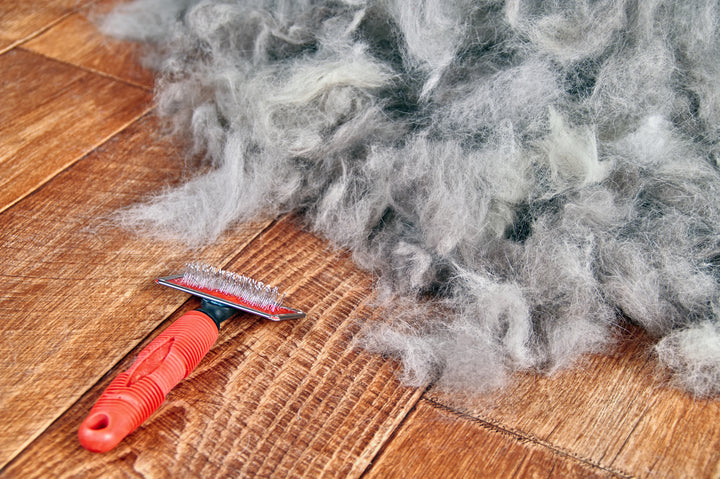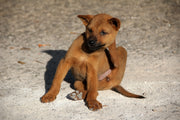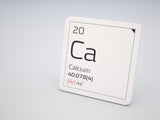Why Dogs Shed - And What You Can Do About It
Why do dogs shed? Dogs, cats and even humans lose a certain amount of hair on an ongoing basis. That’s just the result of the fact that individual hairs have a finite lifespan.
Most dogs also go through seasonal shedding (often this occurs twice a year during spring and autumn), a sensible adaptation that allows a dog to have a thicker coat during colder winter months and a lighter coat when the temperatures climb.
It’s particularly bad for some breeds (think German Shepherd Dog), but all dogs (except those that are truly hairless) shed to some degree.
So, while you can’t stop your dog from shedding, there are ways to manage your dog’s shedding so you aren’t living in a cloud of fluff or living in fear of wearing your favourite pair of black trousers.
What’s the Difference Between Normal and Excessive Dog Shedding?
Your dog’s breed and coat type have a big influence on the amount of hair they shed. Some breeds (like poodles) have coats that never stop growing. These breeds are sometimes referred to as being hypoallergenic, though they do also shed to some extent.
At the other end of the spectrum, double-coated breeds with thick insulating undercoats (made up of shorter, softer hairs) and short topcoats (the straight hairs you see when you look at the dog) lose more hair on an ongoing basis.
Come shedding season, if you have a breed like a German Shepherd or a short-haired Labrador retriever, it may seem like your dog is a hair-producing machine! In general, the thicker the undercoat the more your dog will shed when the seasons change.
When to Call the Vet
While healthy shedding is something to be expected, excessive shedding can also be caused by illness, allergies or nutritional deficiencies.
If you notice your dogs is scratching a lot and is losing more hair than usual, fleas, lice or mites might be the culprits.
Infections may also cause skin irritation which, in turn, can drive your dog to excessive licking resulting hair loss and bald patches.
Cushing’s disease is one of several metabolic disorders that can lead to hair loss, as can food allergies or sunburn.
While globs of loose hair all over the place can be annoying, it’s only when hair loss is accompanied by symptoms like incessant scratching, licking or nibbling, open sores or signs of irritation (redness, swelling, rashes, scabs) that you should consult your veterinarian to see what’s going on.
Pregnancy can also take a toll on your dog’s ability to maintain a healthy coat. It isn’t unusual that the extra demands on your pregnant (or lactating) dog might result in heavy shedding.
Maintaining a Dog’s Healthy Coat
Perhaps the number one thing you can do to support your dog’s healthy coat is to make sure you are providing optimal nutrition.
A quality meal plan, like that provided by a Rawmate subscription program, ensures your dog has everything needed from a nutritional standpoint to support the growth of a healthy coat.
Because Rawmate meals only contain whole, natural foods and no artificial additives, preservatives, or colouring, the chances of skin irritation as a result of food allergies are greatly reduced.
Parasite Prevention Can Reduce the Amount of Shedding
A good parasite control program goes a long way towards preventing unwanted shedding.
There are various preventive treatments on the market and we recommend having a chat with your vet to see what makes the most sense for your dog.
Bathing and grooming are also essential pieces of the healthy coat puzzle.
Regular brushing helps remove dead hair to reduce shedding, tangling and matting.
Dog grooming also distributes natural oils produced by skin glands throughout the coat. The nature of a dog’s coat varies widely from breed to breed (short or long hair) and it’s important to make sure you are using a brush, comb, or matt-remover that’s appropriate for your dog’s skin and coat.
Though it may be tempting to bathe your dog several times a week, too much bathing can be counterproductive.
Yes, regular baths help remove dirt and dead skin, but too much bathing can lead to dry or irritated skin. When bathing your dog use a shampoo formulated for dogs.
For most dogs it’s also counterproductive to shave them completely!
Removing all the hair can throw off the dog’s natural ability to moderate temperature and, ultimately, doesn’t change the number of hairs on the dog’s body (and, therefore, doesn’t impact how much the dog will shed… the dog just sheds shorter hairs).
Minimising the Impact of Shedding
No matter what you do, your dog will still shed. But you don’t need to wade through heaps of loose pet hair all year round.
Tricks like vacuuming your upholstery and carpets regularly with a powerful pet-friendly vacuum cleaner can help you keep on top of things.
Collecting hair before it falls off your dog (brushing regularly) really helps minimise the amount of unwanted hair that you have to deal with on the housekeeping front. And, of course, as we said earlier, taking care of your dog’s outside appearance starts by taking care of them from the inside by providing them with appropriate high-quality food.
We’d love to see photos of the canine members your family looking their best. Share your photos of your pup using the hashtag #rawmate so we can find you!

German Shedders
A lot of respect to the Hoomans owned by German Shedders out there.
As many of you know, my own Stock Coat Working Line German Shepherd Dogs are huge contributors to the amount of dog hair we have to deal with here on this end.
Astrid The American Staffy sheds too, but in a much more manageable volume.
If you’re looking for a Puppy to join your family, make sure you put some thought into the allergenic nature of dog hair and make the right choice for your new addition.
We love our dogs, no doubt about it...but the hair! So. Much. Hair.
We'd love to hear from you. Any stories of dog hair and how it affects your everyday life?








There are 0 Comments